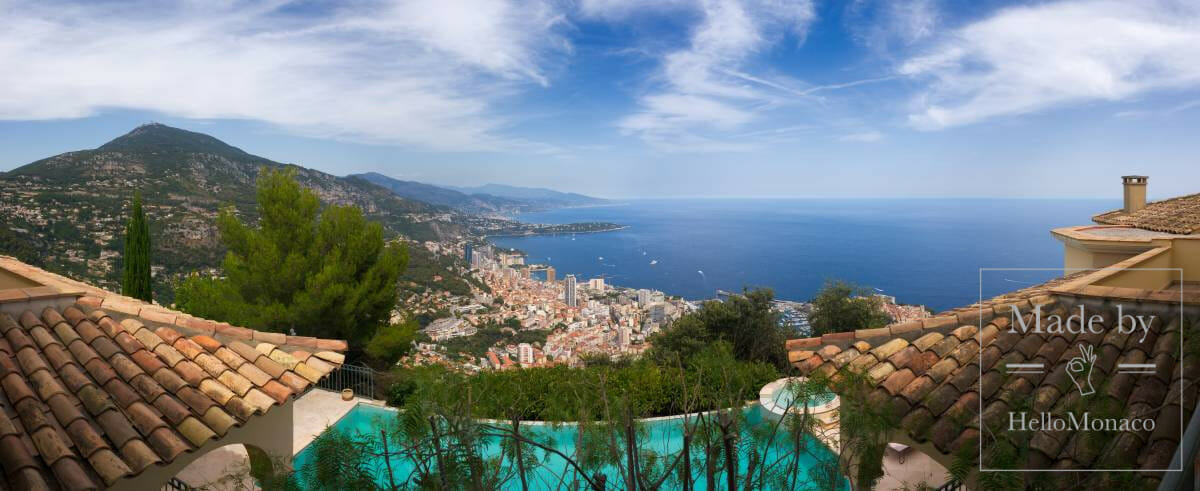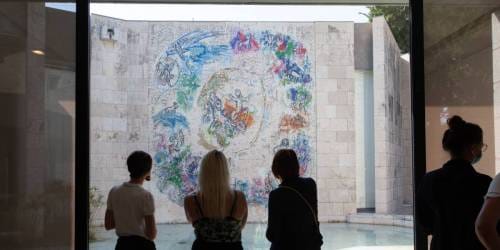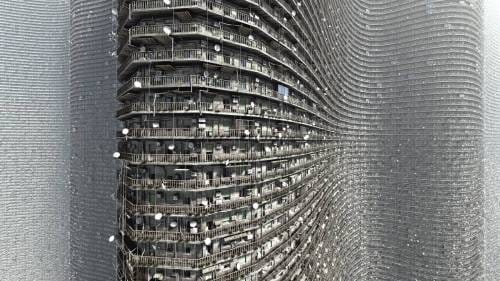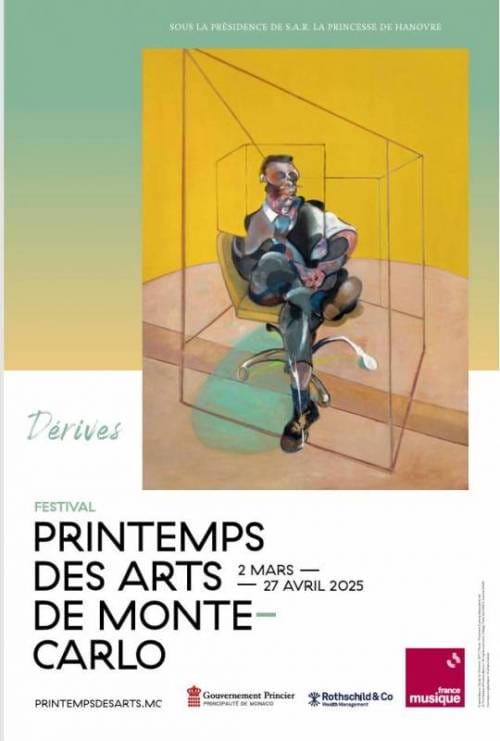Tour of the Legendary Wine Cellar under the Hotel de Paris
“Our wish is to preserve the exclusivity of this exceptional place. I put myself at the entrance and I do it all day [laughs],”says the chief wine waiter of the Hotel de Paris, Patrice Frank, as he opens the doors to the sanctuary. “We are lucky to have 1,500 m2 devoted to wine in Monaco, very few people know what is under their feet,” confides the wine cellar chief, Gennaro lorio.” Hydrometry is even more important than temperature because it plays on the elasticity of the plugs,” says the head of this unrivalled natural incubator. Around him, hands are busy. Daily deliveries fill wooden lockers. The bottles are arranged in themed aisles: Bordeaux, Loire, Burgundy … “Nothing is mechanized, everything is done by hand,” says Gennaro proudly. “Most people think of it like going to a museum, but it is a service like any other. Like lingerie or pastries.”
“A hive,” says Patrice Frank. “This place is magical for two reasons: its content and the media buzz around this place. In 10 years I have had to take part in about 60 televised broadcasts from around the world. Everyone knows the SBM or the Hotel de Paris,” says Patrice Frank. According to it vaults, it has been referenced to 3,000 times.

“The youngest wines are from 2007, all the rest are resting. Money that sleeps, capitalization in time. A relative slumber sometimes, since 320,000 to 330,000 bottles of champagne are sold per year. 900 bottles are uncorked per day at the 40 outlets of the group!” From 3 Michelin establishments to room service, bars, nightclubs and organic restaurants,” says Gennaro. A daily supply is provided for the SBM locations. “No need to head back and forth to the cellar according to the wishes of the customers, everything is in service condition.”
Incessant curiosity
“We never go down during service. That would be unbelievable! Even anti-professional,” Gennaro plagues at the idea that a bottle, and therefore its sedimentation, is mishandled. Availability and eclecticism. “The luxury we have today is not only to have what is dearest, but especially what is rarest. But, once again, scarcity takes time.” Notably, to find future treasures. “We’re pretty good,” confesses Patrice Frank, “but the worry is that not all foreign wines are distributed in Europe or France. If you taste something exceptional in Argentina at 5 euros, but you have to add 25 euros for transportation, it does not become more interesting.” Especially when you already have gold under your nose. “Before, it was Burgundy white, red Bordeaux,” Gennaro says. “Today, we sell as many bottles of Champagne as the great Provence: Coteaux varois, Cassis, Bellet, Coles de Provence…”

For the average customer, wine represents between 35 and 60%,” summarizes Patrice Franck. An idea that aligns with the spirit of Alexandre Dumas: “Wine is the intellectual part of a meal, meats and vegetables are only the material part.”
“We try to contribute to our heritage,” says Gennaro lorio, wine cellar chief.
Two men with one passion. “Words have a real complexity with wine. Besides, all drinkers are great talkers,” notes Bernard Pivot. Patrice Frank and Gennaro lorio are of this caliber. From their palaces, the poetry of wine springs forth. Their love.

Chief sommelier (wine waiter) at the Hotel de Paris for 17 years and president of the Monegasque association of sommeliers, Patrice Frank no longer has exactly the same label as he did when he started. “I have been doing this job for 27 years. At first, when I entered the room, I had it down to a science. Now, I am obliged to keep up to date every day because the customers are very sharp in terms of wine. ”
“Before, the sommelier was an extraterrestrial.” A statement confirmed by the wine cellar chief, Gennaro lorio. “When I went to Ducasse in 1987, someone who presented himself dressed in black with an apron was an extraterrestrial. In Monaco and France, the sommelier was only a well-ranked chef 30 years ago.”
Entering the cellar in June 1988 before becoming wine cellar chief in 1993, Gennaro forged his character in the vaults and observed the evolution of manners on the surface.”

The customer is not more competent than before, but more informed. We have a shared responsibility in the sense that research continually develops”. The Old Continent no longer has the monopoly of wine-growing and know-how. “Every day, I discover a new country where wine is made. In China, 580,000 hectares of vines will go into production in the next three years!” supports Patrice Frank.
“We’re trying to contribute,” says Gennaro. “Make a difference thanks to the psychological approach, the knowledge of the wine regions and the wine structures, to give advice,” adds Patrice Frank. “We have a duty to and we are trying to bring something to the table. Our aim is to transmit the same quality.”
The selection is an unceasing search for novelties. Everything is bought directly from the fields, so traceability is 300% guaranteed. According to a picture painted by Gennaro lorio, experiencing the cellars begins with the delivery space, in front Prince Albert’s present reception room. Under the protection of a statuette of St. Vincent, patron saint of the vine growers, is an old empty cart. “There is no car in the world that has travelled more kilometers!” Jokes Gennaro. Apart from Bordeaux, arranged in the vintage section at the head of the first gallery, everything is classified by region. A path through the cellar leads to a legend: the princely vault, which was protected from Nazi pillage by a simple trick.

“Apart from the Silver Tower perhaps, there is no place that can offer these wines with such traceability,” says Patrice Frank pointing to the Château Margaux 1929, 1961 and 1957. Aromatic and tasty treasures prior to the 1960s and voluntarily withdrawn from sale. “We took the luxury of being able to say no to certain clientele who create a buzz by buying them,” says Gennaro. “Many precious lots were saved during the Occupation by racks of empty bottles, seven rows deep, used to plug the tunnel.”

Behind this deceptive wall of glass: “vintage bottles, spirits, silverware from the Hotel de Paris and from a Russian nobleman who paid,” says Gennaro. This “Maison de Chais,” named after the brotherhood created by Louis de Polignac – the godfather of Prince Albert – is not lacking in anecdotes. VIPs like Hollywood actors, are also included in stories of memorable evenings.
Further down the maze, a “chapel” with an imposing black gate. (“Where we put the journalists.”) A place for curiosities, too, for the collection of Princess Caroline occupied the premises before having to be displaced.
The journey continues through a long corridor holding items from a thousand countries. Double magnum wine is rare. Half-bottles represent 5%. “The international clientele is more inclined to taste a great French wine, but likes to see the big labels from their country represented,” justifies Gennaro before unveiling his museum in the “Marie-Blanc Reserve”.

A 1973 Mouton Rothschild labeled with Picasso next to a Petrus 1941 and 1945, a Yquem from 1890. The oldest bottle, “undrinkable”, has no label but “Deféndu d’en laisser” (which means “forbidden to leave a drop in this bottle”) is engraved on its glass. Another 1945 Mouton, near a Napoleonic Cognac from 1804, is valued at 25,000 euros.
“He who knows how to taste wine does not drink wine but savors secrets.” Wrote Dali.








